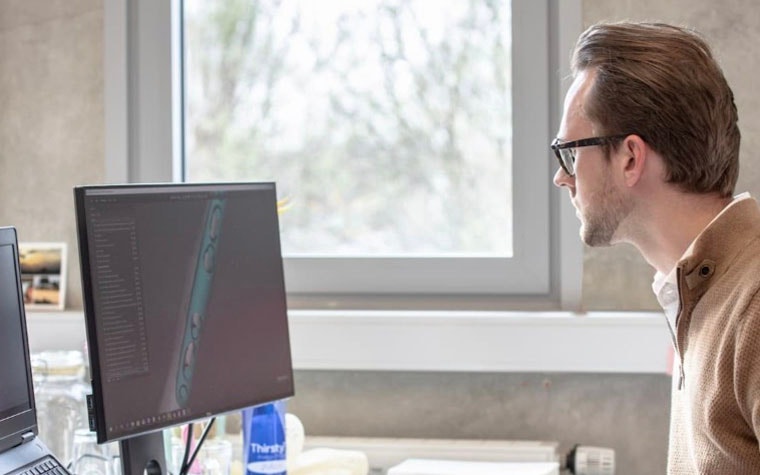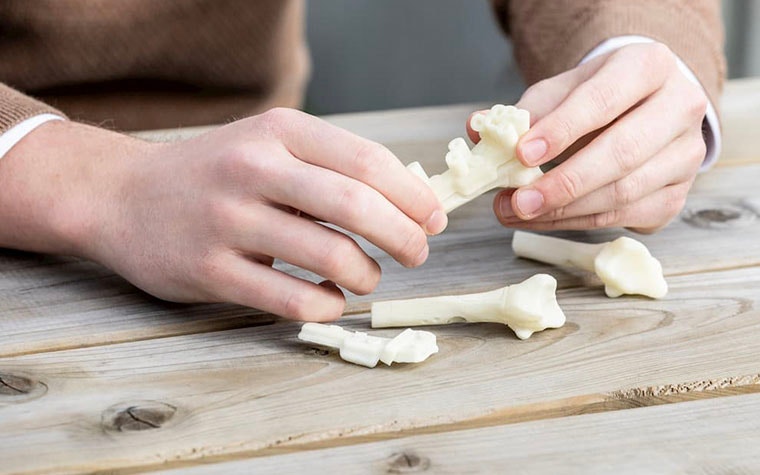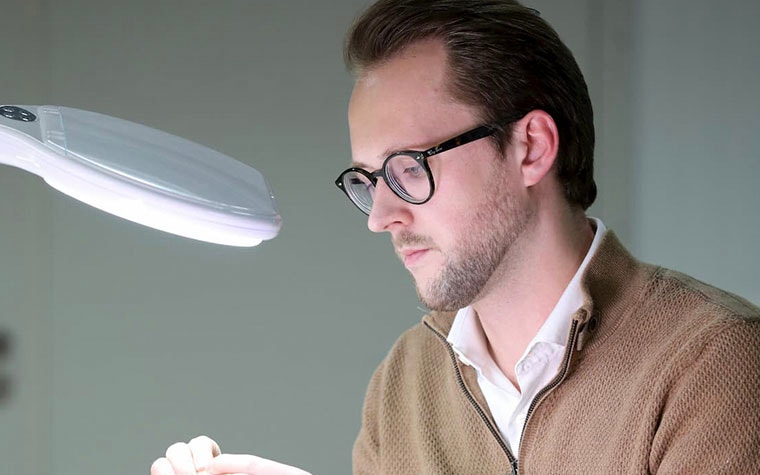LIFE AT MATERIALISE
A Day in the Life of a Materialise Clinical Engineer

“When I came to Materialise, everybody was very friendly from the moment I entered the company. I had the chance to meet with and learn from some of the professionals who work here, and I immediately felt that it was a place where I wanted to work.” This is what Jorn Witters thought when he visited the company to take part in what is now known as the Future Innovators Day at Materialise.
At the time, Jorn was a biomedical engineering graduate who joined Future Innovators Day to get a sneak peek into jobs and life at Materialise. A few months later, he walked through the door of Materialise again to start work as a Clinical Engineer.
A healthier world, one patient at a time
Jorn works as a Clinical Engineer in the orthopaedics department at Materialise. He is responsible for planning operations in collaboration with surgeons and is part of the product line for osteotomies — whereby a bone is corrected to restore the patient’s anatomy and function. Like every patient, each case he works on is unique to that individual’s anatomy. But for all of them, he has to follow the same steps.


The planning starts when Jorn’s team receives images of a patient from a surgeon, and they segment and convert them into 3D images using Materialise’s specialized software. Once they know the specific needs of the patient, they can determine which kind of surgical approach would be possible. After a planning session with the surgeon, where they discuss the possibilities and try to find a solution for the patient together, they can start the design of the 3D-printed guides.
Once the guide has been 3D-printed at Materialise, the surgeons can use it in the operating room by fitting it over the patient’s anatomy to indicate where cuts should be made according to the plan that has been previously discussed with the engineer.


“No two days look the same for me. It always depends on the case that I am working on and in which step of the planning we are at the moment.” Jorn’s everyday work at Materialise also includes a lot of communication with the conversion engineers who design the guides, as well as ensuring that the prints meet quality regulations and deadlines.
Never-ending learning opportunities
Jorn enjoys working with his other colleagues at Materialise and also with surgeons, who he feels are very passionate about their job. He thinks it’s always great when surgeons think along with the engineers and are open to 3D planning.
The fact that every case is different can be challenging for the clinical engineers at Materialise, but it provides them with the opportunity to learn more about the clinical features and to get technical knowledge by working with senior employees of Materialise.
“You face challenges every day, but they make you learn and grow, and this makes it easy for me to stay motivated. The job also has very strict deadlines, but being involved in the whole process, from the planning until the guide is printed, is very rewarding,” explains Jorn.
“Sometimes you can even go to surgeries and look at the results, which really makes you realize how much you are helping a patient with 3D printing. Surgeons come to us with deformations where 3D visualization and 3D printing really help with their operations.”


A step towards the future
While Jorn was still studying at the University of Leuven (KU Leuven), he already knew about Materialise. When he heard about Future Innovators Day, he immediately applied. Thanks to a testimonial from a clinical engineer at Materialise, Jorn, who was very interested in implant design, realized that this could be his professional future.
“There were no vacancies open for clinical engineers that day, but I had the opportunity to show my interest in the job. I made sure to keep an eye on the vacancies at Materialise. Some months later, when a position was available, I applied and, because there was already a mutual knowledge, it made things much easier to get the job,” Jorn recalls.


Jorn is convinced that Future Innovators Day is a great way to get to know the company better, to discover what the different units do, and to explore the professional possibilities at Materialise. It’s especially interesting if you are about to graduate and don’t have a clear idea of what you want to do.
The day also included hands-on participation in a case, which was one of Jorn’s favorite moments. He had to assume a specific role which allowed him to gain a deeper insight into the possibilities of 3D printing.


To this very day, Jorn still keeps his first impressions of Materialise and the people and finds motivation in them: “Everybody is friendly in my team, and it’s great to work with such passionate people. It’s a nice environment, and I get a lot of freedom and responsibilities in my job, which I value.”
Share on:
You might also like
Never miss a story like this. Get curated content delivered straight to your inbox.
